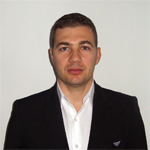FACTORI CARE AFECTEAZĂ PERFORMANȚA FIZICĂ OPERAȚIONALĂ A MILITARILOR
DOI:
https://doi.org/10.12753/2065-8281-20-08Abstract
Minimalizarea importanței organismului uman și a posibilităților sale de adaptare la condițiile ducerii unei lupte armate, accentul fiind pus, tot mai mult, pe revoluția tehnologică și pacea din domeniul militar, poate constitui un dezavantaj pentru îndeplinirea misiunilor încredințate. Această adaptare a organismului uman este condiționată de influențarea pozitivă a unor factori individuali sau a unora independenți de componenta pur fizică.
Prezentul articol abordează o serie de factori care pot influența performanța fizică operațională a militarilor, factori, care, neglijați, pot conduce la neîndeplinirea sarcinilor militare primite. Rolul informațiilor prezentate în acest material este de a conștientiza faptul că îndeplinirea obiectivelor în misiunile desfășurate de militari nu este condiționată doar de instruirea specifică, de tehnologie și de actul de execuție, ci și de abordarea cumulativă a acestor factori.
References
[Research and technology organisation], RTO-TR-HFM-080, NATO, Optimizing Operational Physical Fitness, , 2009.
Băițan G.F., Pregătirea fizică a militarilor din armata României în contextul integrării în NATO, Editura Universităţii Naţionale de Apărare „Carol I”, Bucureşti, 2019.
Ciapa G.C., Orientări și oportunități pentru pregătirea fizică a militarilor, Editura Universităţii Naţionale de Apărare „Carol I”, București, 2019.
Ciapa G.C., Pregătirea fizică a militarilor din armata României în conflictele moderne, Editura Universităţii Naţionale de Apărare „Carol I”, București, 2018.
Goldman R.F., ”Introduction to Heat-Related Problems in Military Operations”, Pandolf KB, Burr RE, eds., Medical Aspects of Harsh Environments, Washington, Borden Institute, 2001.
Hoyt R.W., Buller M.J., DeLany J.P., Stulz D., Warren K., Hamlet M.P., et al., Warfighter physiological status monitoring (WPSM): Energy balance and thermal status during a 10-day cold weather US Marine Corps Infantry Officer Course field exercise, Natick, MA: US Army Research Institute of Environmental Medicine, Technical Report T02-02, 2001.
Janssen I., Heymsfield S.B., Wang Z.M., Ross R., Skeletal muscle mass and distribution in 468 men and women aged 18 - 88 yr., J Appl Physiol, 2000.
Johnson R.F. & Kobrick J.L., Psychological Aspects of Military Performance in Hot Environments, în D.E. Lounsbury, R.F. Bellamy & R. Zajtchuk (eds.), Medical Aspects of Harsh Environments (vol. 1), Office of The Surgeon General Department of the Army, United States of America, 2002 apud M. Popa, Psihologie militară, Editura Polirom, Iaşi, 2012.
Juopperi K., Hassi J., Ervasti O., Drebs A., Näyhä S., Incidence of frostbite and ambient temperature in Finland 1986-1995, a national study on hospital admissions. Int J Circumpolar Health, 2002.
Kraemer W.J., Mazzetti S.A., Nindl B.C., Gotshalk L.A., Volek J.S., Bush J.A., et. al., ”Effect of resistance training on women’s strength/power and occupational performances”, Med Sci Sports Exerc, 2001.
Leyk D., Rohde U., Erley O., Gorges W., Wunderlich M., Rüther T., Essfeld, D., ”Recovery of hand grip strength and hand steadiness after exhausting manual stretcher carriage”, European Journal of Applied Physiology, 2006.
Montain S.J., Young A.J., Diet and physical performance. Appetite, 2003.
P.H. Andrew, C.B. Daniel, J.P. Mark & N.C. Joanne, ”Heat strain during military training activities: The dilemma of balancing force protection and operational capability”, Temperature, 2016.
Popa M., Psihologie militară, Editura Polirom, Iaşi, 2012.
Sawka M.N., Wenger C.B., Pandolf K.B., ”Thermoregulatory responses to acute exercise-heat stress and heat acclimation”, Handbook of Physiology, Section 4: Environmental Physiology. Edited by M.J. Fregley, C.M. Blatteis, Oxford University Press, New York, 1996.
Shephard R.J., ”Exercise and training in women, Part I: influence of gender on exercise and trening”, Responses. Can J Appl Physiol, 2000.
Shippee R., Friedl K., Kramer T., Mays M., Popp K., Askew E. et al., Nutritional and immunological assessment of Ranger students with increased caloric intake, Natick, MA:US Army Research Institute of Environmental Medicine, 1995.
Tharion W.J., Lieberman H.R., Montain S.J., Young A.J., Baker-Fulco C.J., DeLany J.P., Hoyt R.W, ”Energy requirements of military personnel”, Appetite, 2005.

Downloads
Published
Issue
Section
License
Copyright (c) 2020 Buletinul Universității Naționale de Apărare „Carol I”

This work is licensed under a Creative Commons Attribution-NonCommercial 4.0 International License.
Articolele publicate sunt supuse legii copyright-ului. Toate drepturile sunt rezervate Universităţii Naţionale de Apărare „Carol I”, indiferent dacă se are în vedere întregul material sau o parte a acestuia, în special drepturile privind traducerea, retipărirea, reutilizarea ilustraţiilor, citatele, difuzarea prin mass-media, reproducerea pe microfilme sau orice alt mod şi stocarea în bănci de date. Sunt autorizate orice reproduceri fără perceperea taxelor aferente cu condiţia precizării sursei.
